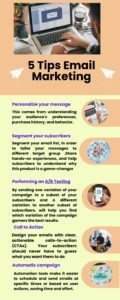Discover the pivotal role of email marketing within affiliate programs. Explore its profound impact on driving success and maximizing conversions

Introduction
Email marketing is a type of direct digital marketing method that uses emails to engage with a business’s audiences. It involves sending promotional or informational content. Email marketing is typically used to create product or brand awareness and generate leads or sales
On the other hand an affiliate program is an organized system that enables affiliate partners [affiliates/publishers] to drive traffic to your properties through tracked links and earn a cut when that traffic converts. Affiliates come in many different forms and they can include: influencers, content creators, bloggers, membership associations, and technology vendors, among others.
In this post I am going to unpack the relationship between email marketing and affiliate programs. You are going to find out how powerful email marketing can be in pushing affiliate offers.
Emails vs Social Media and Ads
Unlike social media and Ads that rely on algorithmic visibility, email lands directly in your subscribers’ inboxes. This means that you have both control and direct access to your audience, which you do not get elsewhere in digital marketing. Would you put such an opportunity to waste? If your answer is NO, then what would do?
By building a targeted email list, you will be crafting an audience that is already tuned in to what you have to say. Note that your subscribers are not just casual browsers; they are actually potential customers who have shown interest in your niche and trust your recommendations.
All you need to do is producing content that resonates with your audience. Couple with the trust you have already built, such content will encourage them to consider the affiliate products you are promoting. It should not be over emphasized that by resonating content, we mean such content that provide answers to your subscribers.
Since they are receiving the content and product reviews directly into their mailboxes, emails are far more effective compared to social media in engaging potential customers.

Strategic Email Content Creation for Affiliate Success
When it comes to email marketing within an affiliate program, it is all about connecting with your audience in a meaningful way. This means that every email sent has to hit the sweet spot between what your subscribers want and what you are promoting. In essence, it starts with personalization.
With personalization, it means going beyond simply adding a first name to an email; rather, it is about understanding your audience’s preferences, purchase history, and behavior. Therefore you should segment your email list, in order to tailor your messages to different target groups.
Remember that as an affiliate, you aim at promoting products of various vendors within your niche, and yet do it in a way that satisfies your audience. This is very important.
So, when creating compelling reviews for the products you are affiliated with, ensure that you do not jut list features of the products, but share hands-on experiences, providing value with how-tos, and helping subscribers understand why this product is a game-changer. Needless to say, that choose products/brands/services to promote that you are satisfied with. Adding this to your authenticity, such product reviews will translate into higher engagement.
Another powerful tool in email marketing is storytelling—when used correctly in emails, it can significantly enhance the connection between a product and a subscriber’s needs. Share stories of how the product has solved a problem or improved someone’s life. This will allows readers to visualize the benefits rather than just read about them to simply gain information about them. This approach can lead to increased click-through-rates [CTRs] and conversions.
Lastly, maintaining a solid content calendar is key to staying on track. This is not just about keeping your email schedule consistent; it is also about making sure that each message is timed perfectly within your subscriber’s journey, leading to more meaningful interactions and, ultimately, conversions.

Enhancing Trust and Transparency in Affiliate Emails
If you want to maintain a positive relationship with your audience while promoting affiliate products, trust and transparency are not just buzzwords; they are essential. Onto these two qualities I add honesty, and when you combine transparency with honesty, you build trust! This is not just about how to stay within legal boundaries; it is also, indeed about nurturing a genuine connection with your subscribers.
In my opinion, these qualities are only best practice, they are a must. Subscribers appreciate when you are clear about your partnerships and this clarity can actually boost engagement and sales.
As part of honesty and transparency, is another critical issue: adhering to regulations. Make sure that you follow the FTC guidelines and include clear disclosures in your emails. Moreover, this should be done in a way that feels natural and not forced, thus, keeping your emails enjoyable to read while staying compliant.
Since you will occasionally be promoting affiliate products. simply remain transparent in whatever you do; keep your audience’s best interests at heart, then your emails can become a trusted source of information and recommendations.
Optimizing Emails for Higher Click-Through Rates
You are likely well aware that in affiliate marketing, your bread and butter come from people actually clicking through and making a purchase. That is why it is essential to optimize your emails for higher click-through rates (CTRs).
Designing emails with clear, actionable calls-to-action (CTAs) is non-negotiable. Your subscribers should never have to guess what you want them to do. Whether it is a button that says ‘Buy Now’ or a text link that directs them to a review article, make your CTAs stand out and make them compelling.
As already highlighted above, segmentation is a game-changer in email marketing. By breaking your list down into focused groups, you are able to send more relevant offers. Note that this is not just about demographics; it is also about behavior.
These are things to note: Did they click on your last email link? What products did they follow and purchase? Then send them more of what they are interested in. Ignoring segmentation means you are likely leaving money on the table.
In order to perfect your email campaign, performing an A/B testing is crucial. This can be done by sending one variation of your campaign to a subset of your subscribers and a different variation to another subset of subscribers, with the ultimate goal of working out which variation of the campaign garners the best results.
Sometimes changing the color of your CTA button or the wording of your email subject line can substantially increase your CTRs. Always test different versions to see what resonates best with your audience.
You cannot improve what you do not measure. Your email service provider likely has a wealth of analytics tools at your disposal. Use them to track open rates, click rates, and conversions. These metrics are invaluable for refining your affiliate strategy and ensuring your email marketing efforts pay off.
Now that we have covered how to optimize your emails, let us look at how to handle some of the challenges you are likely to face in affiliate email marketing and the best ways to stay current with market trends. This will set the stage for sustained success and position you to adapt quickly in a dynamic digital landscape.
Navigating Challenges and Adapting to Market Trends
If I am allowed to speak frankly here, I would say that: “email marketing in the affiliate space is not a walk in the park”. You will have to contend with challenges ranging from hitting the spam folder [meaning that your email content will not reach the desired target] to keeping up with ever-changing algorithms. Other complexity may stem from your email list churn as well as non-compliance with regulatory authorities. Even then, do not worry yourself too much about it – every problem has a solution.
For your mails not being delivered, that is, being sent to spam folders, it is better to understand the cause and rectify it. To avoid spam filters, you need to follow some best practices, such as using a reputable email service provider, verifying your domain, maintaining a clean list, asking for permission, and complying with the CAN-SPAM Act.
Another problem is email list churn. You may be asking yourself what this means? Simply defined, email list churn, in email marketing, refers to the rate at which subscribers either leave or stop engaging with your email list over a certain period of time. This can stem from subscribers unsubscribing, marking your emails as spam, or simply not opening your emails anymore!
Specifically, pay close attention to the churn rate, as this serves as a critical metric in email marketing. Notably, the churn rate directly impacts the size of your active subscriber base, which in turn, affects your campaign’s reach and effectiveness. High churn rates can indicate problems with your email content, frequency, or targeting, and should be addressed to maintain a healthy and engaged email list.
If you discover a high churn rate, then check the following: First on the list should be ensuring that your content is relevant and engaging to your audience. This can be done by segmenting your email list based on the interests and preferences of your subscribers and perform and A/B testing. Personalizing your emails can also help to increase engagement and reduce the likelihood of subscribers opting out.
Secondly, ensure that you are not overwhelming your subscribers with too many emails. It is important to find a balance between staying top of mind and not becoming a nuisance. Therefore, regularly clean your email list to remove inactive subscribers. This will not only help in reducing list churn, but will also improve on the rate of your emails delivery.
Lastly, make it easy for your email subscribers to manage their subscription preferences. This gives them control over what type of emails they want to receive and how often, reducing the chances of them unsubscribing.
Adaptation is key in this game
The digital landscape never stands still, and neither should your email strategy. This includes staying abreast of shifts in consumer behavior and preferences as this can dramatically sway your affiliate success. Choose something that resonates with your audience today, because tomorrow it might change.
Innovative techniques in email marketing for affiliate programs are an exciting frontier. Interactive emails, advanced segmentation, and personalization are rapidly becoming more than just buzzwords; they are essential tools in your arsenal. Stitch these into your approach to stay relevant and engaging.
Look at the changes in trends as new opportunity for learning and adaptation. A mindset geared toward continuous learning will take you far. Stay hungry for knowledge, and do not be afraid to test new waters. A/B testing, meticulous tracking, and drawing insights from your data will be invaluable in refining your strategy.
Conclusion
In conclusion, the intersection of email marketing and affiliate programs is dynamic and rich with potential. It is an environment where the keen learners and agile marketers thrive. If you are prepared to stay on top of trends and face challenges head-on, you are on the path to success.

I hope you have enjoyed reading and understanding the role of emails in affiliate marketing and if you have any questions or comments, please leave them in the box below and you will be answered within 24 hours.
Ready to elevate your affiliate marketing game? Explore the comprehensive training and tools at Wealthy Affiliate for a head start in online business success. Click here to unlock your path to affiliate triumph
Thank you.
Cheers
Joseph Hawumba
